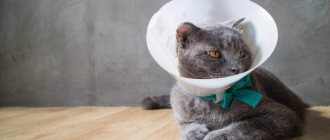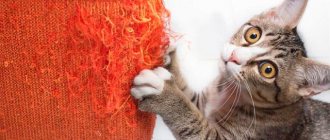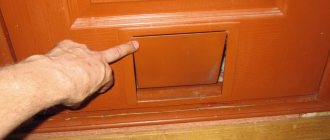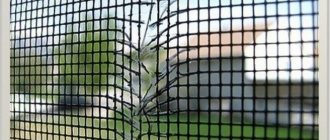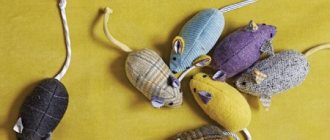Selection rules
The protective device causes quite a lot of discomfort to the pussy. In order not to aggravate the situation, when purchasing a plastic collar for a cat, you need to pay attention to the following points:
- Choose an option according to the size of your pet;
- Opt for a transparent option - the collar already obscures the view, and if the cat cannot see through the collar, he will become nervous and try to remove it;
- Pay attention to the design of the collar - purchase the version with Velcro.
Satisfactory height and strength are important. The collar should not completely block the cat's view, but at the same time not be too low and allow her to lick the wounds.
The protective device should hold its shape well, fit properly and not be too tight.
Most collars are made in the form of a semicircle with fastening tabs. It is very difficult to put them on a purr, sometimes one person cannot cope with this and you have to resort to help. It is better to buy the version with Velcro. Yes, the price of such a cat collar will be higher, but there will be much fewer problems with attaching it.
How to put on a cone correctly?
The procedure is best carried out by two people: one person should hold the animal, and the second should put on its collar. The main thing is to do everything carefully and not to rush, so that the cat’s stitches do not come apart (for example, after castration). To put a protective collar on a cat, you need to:
- assemble the product following the instructions and attach it to the collar or bandage;
- place the pet on a flat surface and secure it with your hands;
- put on a collar with a collar and check whether it is too tight for the cat, then fasten all the elements of the structure;
- calm your pet down - give him his favorite treat, pet him and pick him up.
You need to keep an eye on the animal, as it can get stuck in narrow passages or cling to other objects. To avoid dermatosis, it is necessary to regularly check the skin of your pet’s neck for abrasions - this can happen if you use a rough collar, a heavy structure, or fix it with the same non-sterile bandage every day. Due to the fact that it is difficult for a cat to lick itself because of the collar, it is necessary to comb its fur more often.
Usage
Buying a collar is only half the battle. The main thing is to secure it correctly and not create additional obstacles and difficulties for your pet.
- It is very rare that you can choose an option that allows your cat to drink water and eat food from its usual bowls without any problems.
- Most often, the owner has to remove the collar so that the pussy can drink and eat.
- It is necessary to carefully monitor the furry person. As soon as she has eaten and drunk, she must immediately put the device in place.
- If you are distracted or simply hesitate, the cat will begin to lick itself, and this is fraught with serious problems.
Before purchasing, looking at photographs of cat collars that are posted on the websites of zoological stores and choosing the best option, know that even if you buy the most expensive and high-quality product, you may still encounter difficulties.
- For example, an animal constantly clings to something. This problem most often occurs when the collar length is too long.
- The simplest solution is to cut off a small piece and see how much this measure helped the cat.
- It is also possible to cope with neck chafing at home. There are two options - you have tightened the collar too tightly - you need to loosen its “grip”.
- It's very simple to check - the owner's finger should pass between the pet's neck and the collar.
- Sharp, scratchy edges of the collar must be covered with tape so that the device will not rub your pet’s neck.
But if your pussy walks with its head down all the time, it means the device is made of too heavy a material and you will have to buy another thing.
Blankets for hot or rainy weather
Dogs suffer from heat no less than people, and for some breeds, young animals, sick, elderly and pregnant animals, heat poses a mortal danger. On hot days, you have to limit walks, wet the dog with water, etc. A blanket can help, but not a warm one, but a cooling one.
This blanket is activated in the same way as a cooling blanket. It needs to be moistened in cold water and squeezed a little so that water does not drip. The special material will not heat up for an hour. You can buy such a blanket, or you can make it yourself from a cooling dog bed.
There are also lightweight raincoats made of waterproof material. Of course, a blanket will not protect the dog’s belly and paws from dirt and water, and it will not be suitable for a pet who is afraid of hypothermia. For such cases, you will need a jumpsuit. But for pets who walk mainly on clean paths, a blanket will come in handy. You can also cover warm winter or demi-season clothing with a waterproof cape.
We do it ourselves
Rarely, but it is also possible that the nearest pet stores do not have a collar suitable for your cat. Anyone can cope with this trouble.
The device can be made from:
- Cardboard;
- Plastic bottle;
- Foam plastic;
- Matter.
The cat can quickly cope with a structure made of cardboard and fabric. The foam model is a kind of frill, which can become an effective protection for wounds on the back, stomach or sides, but the cat can reach its paws.
The most suitable material would be plastic. Let's take a closer look at how to make a cat collar with your own hands at home.
Meaning of fixture
Before learning how to make a collar for a cat with your own hands, it is worth thoroughly understanding when such protective measures are an urgent need.
Let's say you decide to sterilize your cat. This means that for some time after the operation she will have a protective suture, which will not heal immediately. To prevent the pet from licking it and damaging it in some way, a special collar is needed. Such a device will constrain the animal’s movements, so your cat will not be able to tear the stitches, introduce some kind of infection to the wound, or lick off medications.
Domestic cats are often attacked by ear mites. The pet constantly scratches its ears, increasing skin irritation. Another common situation for a cat is a showdown with neighbor cats. If the cats got into a fight and you need to treat your pet's wound with a healing ointment, you will need a protective collar to prevent licking the wounded area.
In some cases, you need to think about a collar for a cat after treating her for fleas and other parasites. If you use a potent drug, you must protect your pet from accidental poisoning. The same applies to treating an animal for lichen. In this situation, an antifungal agent is applied to the skin of the furry creature, which he cannot taste.
Remember that after castration or treatment of the cat's inflamed areas from parasites and skin ailments, it is recommended to use a special collar. This way, you will protect your pet, and its treatment will be effective.
Related article: How to care for newborn kittens
Tools and materials
Nothing fancy is required. It is enough to have a plastic cloth, a sharp knife, a felt-tip pen and tape on hand.
In order not to make a mistake with the dimensions, you should make a pattern, and for this prepare:
- A sheet of paper (a double piece of paper from a school notebook);
- Ruler;
- Pencil;
- Compass;
- Centimeter.
Wearing rules
Several conditions for wearing the structure must be observed:
- Heavy and voluminous collars should not be worn, as this will limit the animal’s movements too much.
- The size must be appropriate for the pet, for example, for a small kitten you need to buy or make a suitable cone.
- Cover sharp edges with electrical tape, adhesive tape, or tape, otherwise the cat may get hurt.
- Do not let your pet outside, it is unsafe.
- Make sure that the animal can easily reach the bowl of food and drink.
- If the pet refuses to eat, feed it by removing the collar.
- Inspect the skin under the collar while wearing it.
- Brush your pet, because because of the barrier he cannot groom himself.
- Provide free living space.
- Isolate from other animals.
- Wear until recovery, when the wound has completely healed and the veterinarian allows you to get rid of the collar.
You should put on the collar carefully, without making sudden movements; it is better to do this together.
Progress
You need to start making a veterinary collar for a furry pet by creating a pattern. To do this, you will need to take two measurements - neck circumference and the distance from the tip of the nose to the cat's neck.
Next steps:
- Two circles are drawn on a piece of paper: one is the size of the neck circumference, the second is the distance from the nose to the neck (two to three centimeters should be added). The center for both circles must be common.
- Inside the smaller circle (we step back a couple of centimeters from the edges) another circle is drawn where the clasps for the collar will be located.
- The pattern is cut along a large circle (you can make an allowance of a few centimeters).
- The next step is to cut the workpiece straight from the edge to the center.
- The smallest circle is cut out.
- We try the pattern on the cat and make adjustments if necessary.
- We place the pattern on plastic and use a felt-tip pen to outline the contours.
- We fix the places for the loops.
- We thread a bandage (rope) through the loops and secure the entire structure to the animal.
The result is a collar that is practically no different from the factory sample.
Dog blanket pattern
Let's look at how to design a pattern.
First of all, you need to measure the length of the dog's back from the neck (where the collar goes on) to the base of the tail.
Next we need to create a pattern of the required size. To do this, divide the length of the pet's back by 10 and get the size of the side of the square for constructing the pattern.
For example, the length of Jack's back is 30 cm. I divided 30 by 10 and got the size of the side of the square for my pattern - 3 cm. You should get your own square size, depending on the length of your doggie's back.
Draw a grid of squares on lined tracing paper (or just on checkered paper). Have you drawn it? Next, we look at the sample and transfer the pattern directly into the cells onto our “grid”.
For the upper part of the pattern (back), the grid should consist of 7x13 squares.
For the lower part of the pattern (tummy), the grid should consist of 7x10 squares.
When the dog blanket pattern has already been drawn, you can cut it out and go to the store to select fabric.
Simple option
You can make a design using only a sharp knife, tape and a five-liter plastic bottle. The collar will not be as elegant as in the first version, but quite suitable for use.
In this case, to make a cat collar with your own hands, you only need a few simple operations.
- The top is cut off from a plastic bottle.
- Then the place where the lid is located is cut off.
- The resulting workpiece in the form of a semicircle without a bottom and top is cut vertically.
- We try on how well it fits on the cat’s neck and see if the furry creature’s curious nose sticks out from the structure.
- All edges of the plastic rim are covered with tape.
- The headband is put on the cat. The edges of the structure overlap each other and are secured with tape.
The veterinary collar for your beloved cat is ready!
Making a protective product for a pet
You can make a collar for your pet yourself. There are several different ways to make it, depending on the materials chosen.
If you don’t have time to purchase a collar, but you need it urgently, you can build it in a short time from what you have at hand. You will need:
- thick cardboard;
- tape measure;
- compass;
- stapler;
- scissors;
- scotch.
We suggest you read: What to feed a British kitten: rules of feeding and care
The procedure is as follows:
- On a sheet of cardboard we draw a semicircle (diameter - 20–25 centimeters).
- Cut out the part and roll it into a funnel.
- Using a measuring tape, we find out the circumference of the pet’s neck.
- At the base of the cone we make a hole, the diameter of which is equal to the circumference of the cat’s neck.
- After you wrap the future collar around the cat’s neck, its side sections will need to be secured with a stapler or tape.
Problems when wearing a postoperative collar:
- A collar that is too large or heavy for a cat will greatly impair coordination: it will be difficult and even impossible for him to jump anywhere, pass between objects, eat and drink.
- An excessively tight collar will lead to hypoxia - oxygen starvation of the brain, poor circulation, chafing of the skin at the point of contact, and damage to the coat.
- An animal can remove an excessively loose collar, or it will slip lower and complicate movement.
- It is unacceptable to buy collars with a strong “chemical” smell. These products are of low quality and your cat may be poisoned by wearing them.
- Buying a collar for a kitten to grow into is not the best solution. A young animal will feel uncomfortable in a bulky structure designed for an adult. A collar is not such an expensive thing to buy for future use. It is better to select it individually each time than to squeeze a large cat into a small collar or try to attach a device purchased for an older cat to a “teenager”.
- The sharp edge of the collar at the point of contact with the cat’s body should be covered with an adhesive plaster on a fabric basis.
- The collar must be removed periodically to allow the animal to run freely and restore muscle tone. It would be good to put a blanket on a cat after abdominal surgery. The animal must not be left unattended while the collar is removed.
- A protective collar for cats is necessary for various types of medical interventions. It preserves the health of the animal, being a necessary measure in the postoperative period and during conservative treatment with drugs for external use. The cat quickly gets used to the inconvenience of wearing it. In addition, a properly selected protective collar almost does not cause them.
Replacement option
If your pet does not want to put up with a device on his neck, you will have to buy or sew him a dress that will cover the wound.
Just keep in mind that this option is not suitable in all cases.
When treating wool and skin with various medications, you cannot do without a collar.
What it is?
This collar is also called “Elizabethan”. This device is used for medical purposes and has a protective function. It prevents the animal from licking itself and helps wounds heal faster. And cats do this because they are genetically programmed to treat themselves by licking. Because they have a substance in their saliva that helps rapid healing. But still, it contains not only beneficial properties, but also various bacteria that can lead to infection and the spread of infection.
An Elizabethan collar is required in the following cases.
- To prevent the animal from removing the bandages after surgery.
- Prevents the cat from licking the stitches to avoid infection.
- Does not allow head wounds to be scratched.
- Protects wounds from injury.
- Helps wounds heal faster and absorb various medications. These can be ointments or drops.
- Prevents the animal from licking medications.
- Makes it difficult to remove the bandage from your head.
- Helps apply flea drops.
- Protects the structure in case of fractures.
This device has a cone shape, and its fields form a fence around the head. The collar can also be inflatable. It is very helpful during the pet’s recovery period, when it is necessary to prevent the cat from licking its wounds. It is also very often used to treat a cat’s fur with anti-parasite agents, the components of which, if ingested, can harm it.
An Elizabethan collar can be purchased at a veterinary clinic, a specialty store, or you can make it yourself. Regardless of which option you choose, there is only one mandatory requirement for the device - it should be as comfortable as possible and not squeeze your neck or dangle from it.

